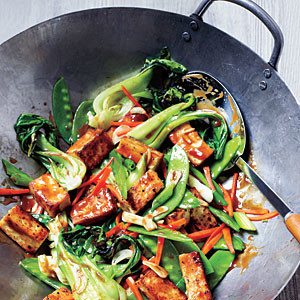The Problem with Belly Fat
Not all fat is created equal. If you are pear shaped, fat accumulates in your butt and thighs, called subcutaneous fat. If you are apple shaped, fat accumulates in your belly. Belly fat, also called visceral fat, increases your risk of developing diabetes, heart disease, stroke, high blood pressure, sleep apnea, erectile disfunction and certain cancers. The fat in your abdomen is very metabolically active, releasing inflammatory substances (such as cytokines) which can increase your risk of atherosclerosis, hormones, leptin and adiponectin, which according to the American Cancer Society, can increase the risk for developing certain cancers: kidney, colon and gastrointestinal to name a few. These hormones can prompt cells to divide which provides the opportunity for cell mutations that increase cancer risks. These hormones increase the risk of becoming insulin resistant-when your muscle and liver cells do not respond properly to normal levels of insulin-which carries glucose to your cells. And Fatty acids, which increase total cholesterol and LDL (bad cholesterol) and decrease HDL (good cholesterol). Abdominal fat can lead to metabolic syndrome, a cluster of five risk factors that increase your risk of heart disease, stroke, diabetes and other health concerns. The five risk factors include: A waist measurement 40″ or > for men, 35″ or > for women, fasting glucose >110, HDL <40 for men and <50 for women, blood pressure 130/85 or higher, and TG >150. It is important to measure your waist. If you have a waist measurement 40″ or > for men, 35″ or > for women, you have too much belly fat and need to reduce that waistline.
So, what can you do? The good news is that belly fat responds to diet and exercise the same as other fat in your body.
- Proper nutrition: A primarily plant based diet high in fruits, vegetables and whole grains, lean protein, and low fat dairy. Pay attention to fat. Only 20-35% of your diet should be fat with only 10% being saturated. Limit red meat and full fat dairy and consume moderate amounts of mono and polyunsaturated fats such as nuts, fish, seeds and vegetable oil (sunflower, corn and soybean). Limit alcohol consumption. Men should never have more than two drinks a day, women no more than one a day.
- Pay attention to portions: Half of your plate should be vegetables, 1/4 your plate lean protein (about the size of the palm of your hand) and 1/4 your plate a whole grain (1/2 cup, about the size of half a baseball).
- Exercise: Spot exercise will NOT get rid of belly fat, but it will tone and shape your belly. The CDC recommends 150 minutes of aerobic activity a week as well as 2 or more days a week of strength training a week. If you are inactive, start slowly and work your way to these goals. Before starting an exercise routine, always consult with your physician first.
- Sleep: Aim for 7-8 hours of sleep a night.
- Reduce stress: Whether you do meditation, try hypnotherapy, call a friend or take a bubble bath, do whatever you need to do to reduce the levels of stress in your life.
Genetics play a role in abdominal fat, but as we age, fat accumulates more easily in the belly and it is important to keep it under control. With a healthy diet, good sleep, stress reduction and consistent exercise, you can achieve your goals of a healthier body.
Veggie and Tofu Stir-Fry
Yield: Serves 4 (serving size: about 1 1/2 cups)
Total: 49 Minutes
Ingredients
- 1 (14-ounce) package water-packed extra-firm tofu, drained
- 1 tablespoon canola oil, divided
- 1/4 teaspoon black pepper
- 3 1/2 teaspoons cornstarch, divided
- 3 large green onions, cut into 1-inch pieces
- 3 garlic cloves, sliced
- 1 tablespoon julienne-cut ginger
- 4 small baby bok choy, quartered lengthwise
- 2 large carrots, peeled and julienne-cut
- 1 cup snow peas, trimmed
- 2 tablespoons Shaoxing (Chinese rice wine) or dry sherry
- 1/4 cup organic vegetable broth
- 2 tablespoons lower-sodium soy sauce
- 1 tablespoon hoisin sauce
- 1 teaspoon dark sesame oil
Preparation
- 1. Cut tofu lengthwise into 4 equal pieces; cut each piece crosswise into 1/2-inch squares. Place tofu on several layers of paper towels; cover with additional paper towels. Let stand 30 minutes, pressing down occasionally.
- 2. Heat a large wok or skillet over high heat. Add 1 1/2 teaspoons canola oil to pan; swirl to coat. Combine tofu, pepper, and 2 teaspoons cornstarch in a medium bowl; toss to coat. Add tofu to pan; stir-fry 8 minutes, turning to brown on all sides. Remove tofu from pan with a slotted spoon; place in a medium bowl. Add onions, garlic, and ginger to pan; stir-fry 1 minute. Remove from pan; add to tofu.
- 3. Add remaining 1 1/2 teaspoons canola oil to pan; swirl to coat. Add bok choy; stir-fry 3 minutes. Add carrots; stir-fry 2 minutes. Add snow peas; stir-fry 1 minute. Add Shaoxing; cook 30 seconds, stirring constantly. Stir in tofu mixture.
- 4. Combine remaining 1 1/2 teaspoons cornstarch, broth, and remaining ingredients in a small bowl, stirring with a whisk. Add broth mixture to pan; cook until slightly thickened (about 1 minute).
Nutritional Information
Amount per serving
- Calories: 233
- Fat: 11.8g
- Saturated fat: 1.8g
- Monounsaturated fat: 3.9g
- Polyunsaturated fat: 5.2g
- Protein: 12.9g
- Carbohydrate: 17.5g
- Fiber: 3.2g
- Cholesterol: 0.0mg
- Iron: 3mg
- Sodium: 389mg
- Calcium: 227mg
Charlotte Autry, Cooking Light
- JANUARY 2013




